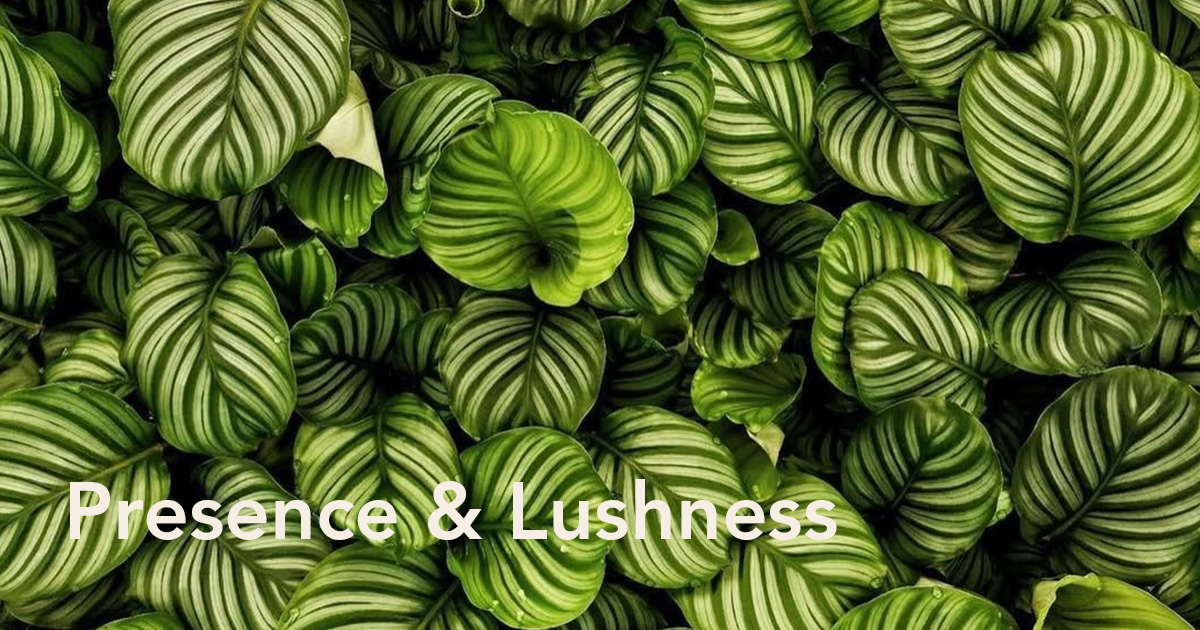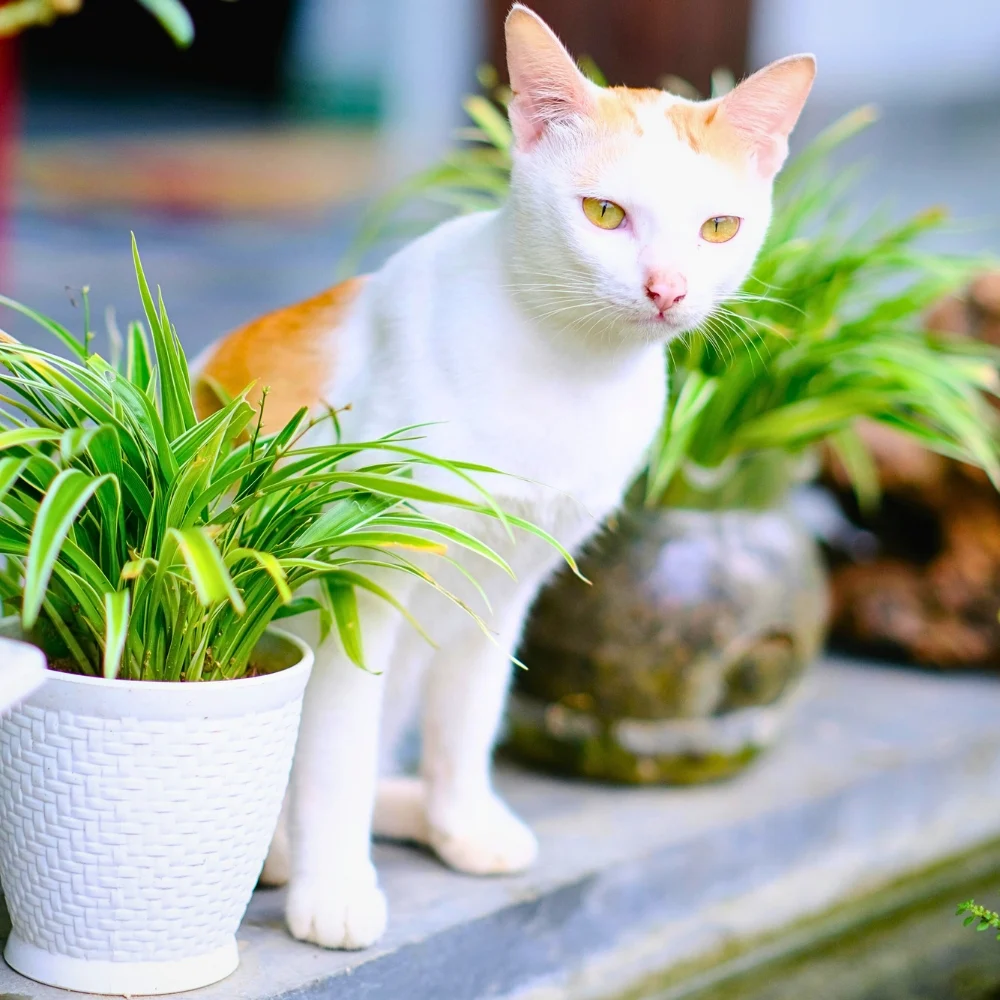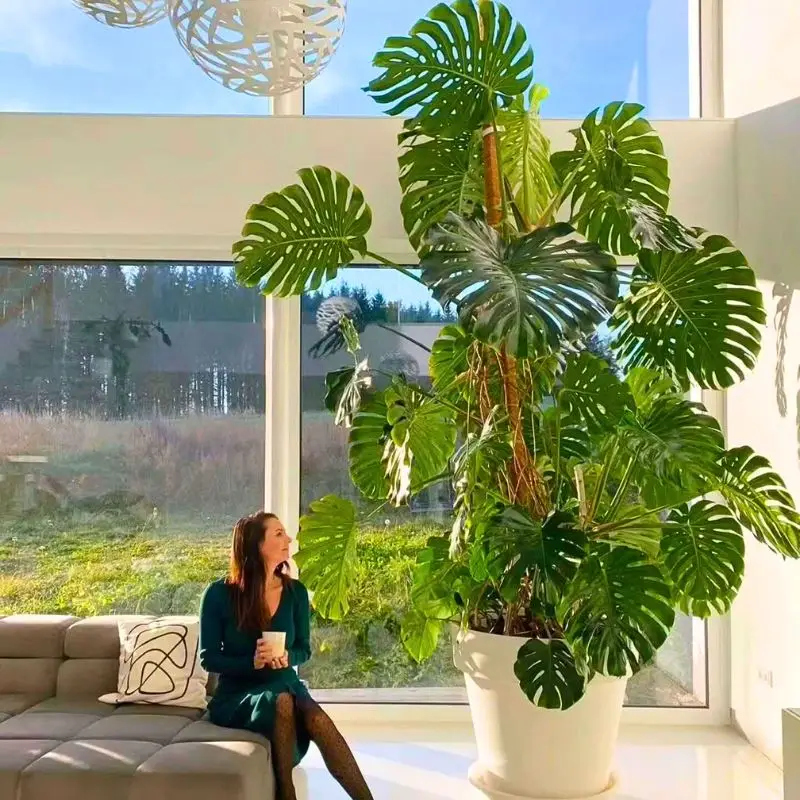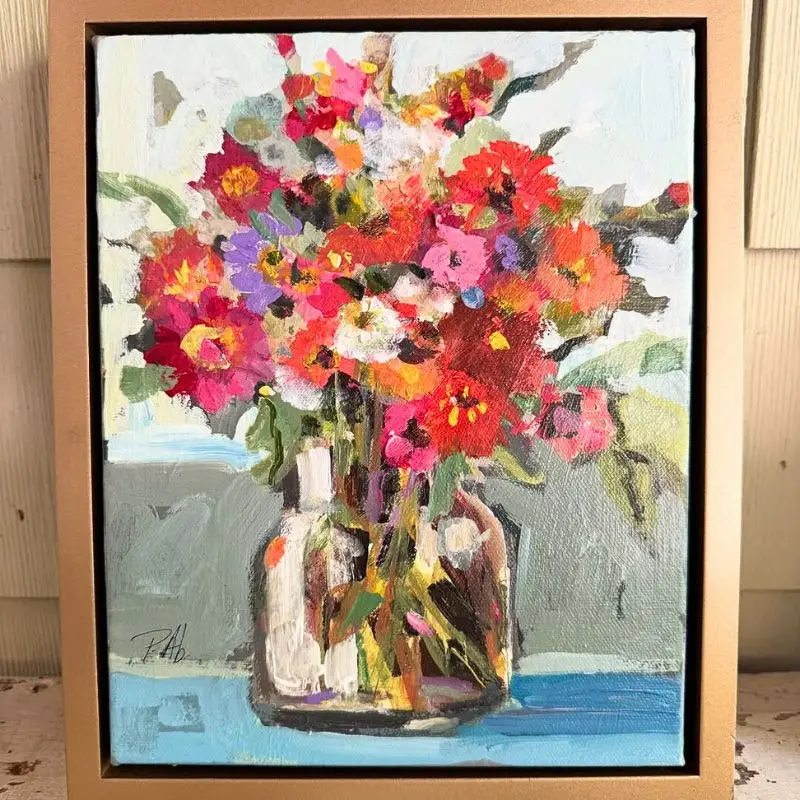There is no doubt regarding the immense benefits of introducing indoor plants to your living areas. From air purification, inspiring creativity, and curating your space to a desirable ambiance, a houseplant is a cheat code for having splendid spaces. Some prefer miniature varieties, but if you have enough space, big leaf plants with large leaves can rise like miniature trees, instantly elevating your decor.
These big leaf marvels come with a massive presence and lushness, complementing your indoor decor and theme. Their glossy leaves and sometimes waxy leaves infuse the right amount of greenery and nature's magic into your space. They are true statement plants that thrive when basic care is met.
Here are the top six big leaf houseplants that are a must-have in your indoor space:
- Monstera deliciosa
- Philodendron xanadu
- Alocasia portodora
- Strelitzia reginae
- Philodendron gloriosa
- Calathea orbifolia
Six Big Leaf Houseplants to Green Your Space
Big-leaf houseplants have become a staple piece to have indoors as part of home decor. Why? Because such plants not only make perfect decoration pieces but also add more grace and aesthetic appeal to your home. Get ready to learn about the most popular houseplants with big leaves with massive foliage that'll immediately conquer your plant eye and get you along the journey to becoming the best plant parent.
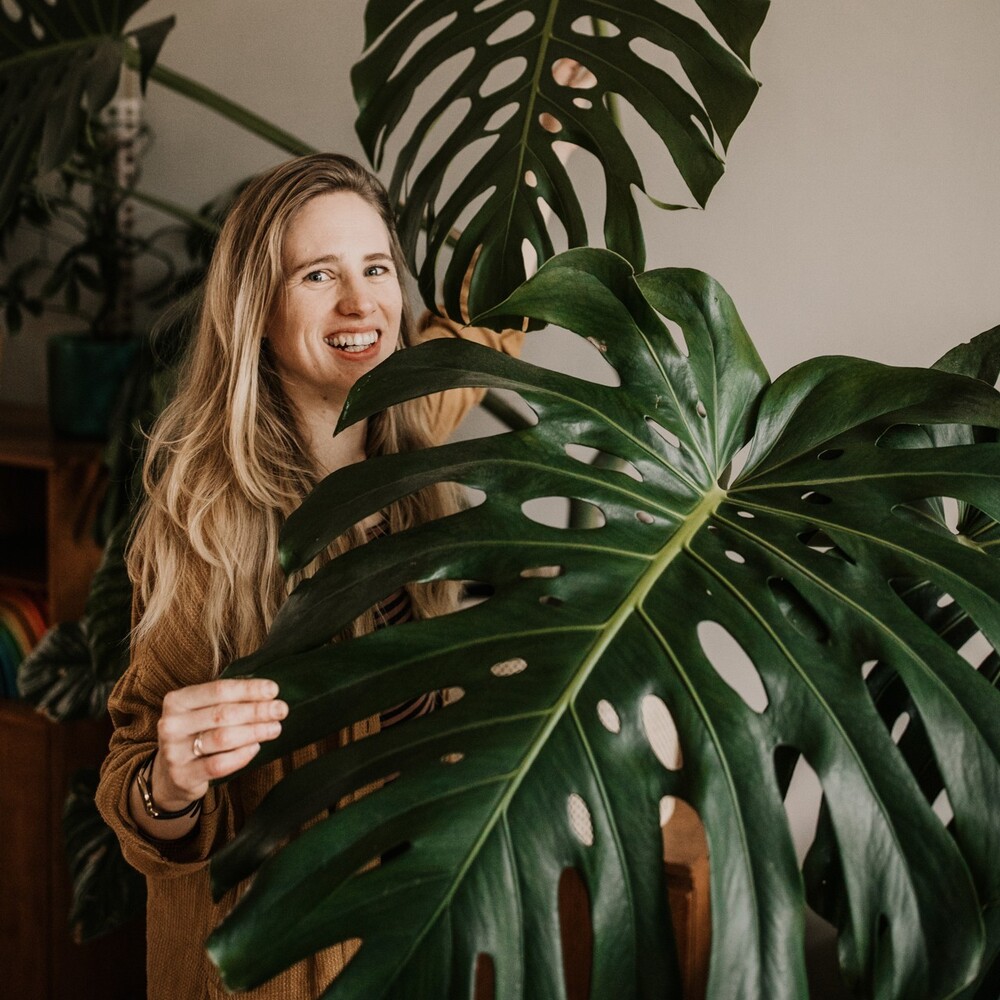
Why big houseplants? With their massive foliage, these houseplants have a visible presence and desired greenery. They can easily act as a focal point to your spaces, creating good feng shui, while also infusing your space with the right energy and atmosphere. Whether tall houseplants or big-leaf ones, these towering and spreading giants will color your space green and invite nature's tranquility and elegance indoors - even under low light conditions that might challenge smaller specimens.
Monstera Deliciosa
This exotic plant is found in tropical areas and has large, split leaves. Monstera deliciosa looks absolutely stunning indoors, immediately increasing the sophistication of your home. A natural climbing species, it can eventually resemble slender trees if offered a sturdy moss pole.
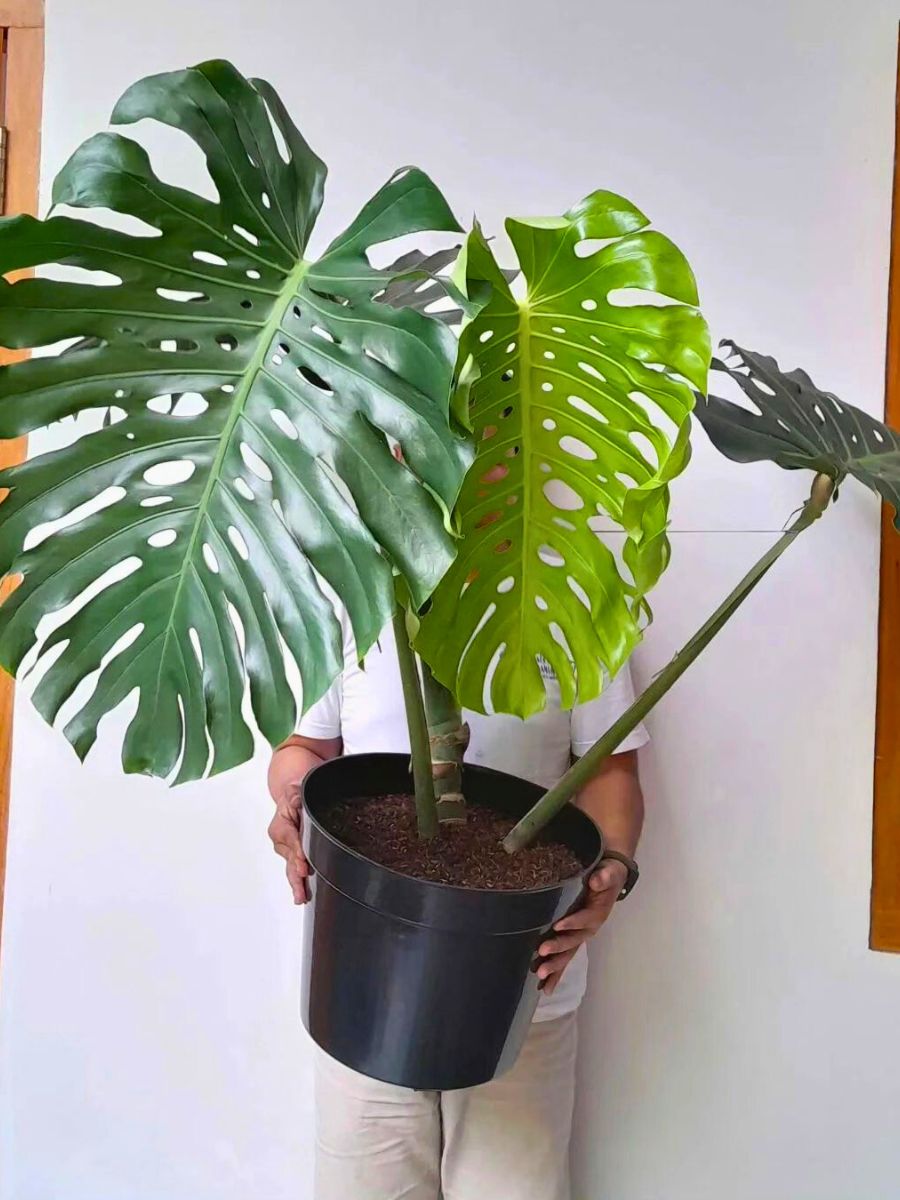
This gorgeous green plant is one of the types of houseplants with massive foliage that are an absolute must-have if what you're looking for is to enhance your indoor spaces.
To maintain healthy growth, allow the top few inches of soil to dry before watering; if the soil feels dry past your second knuckle, hydrate it completely until water drips from the pot's drainage holes. Place it in bright, indirect light - short bursts of direct sunlight in early morning are acceptable, but avoid long exposures to harsh sun to prevent scorching. Watch out for spider mites, a common pest on mature foliage, and wipe leaves regularly to keep them shiny and healthy.
Philodendron Xanadu (Thaumatophyllum Xanadu)
Philodendron xanadu is a big-leaf houseplant with large lobed foliage that is ready to conquer every corner of your indoor home spots.
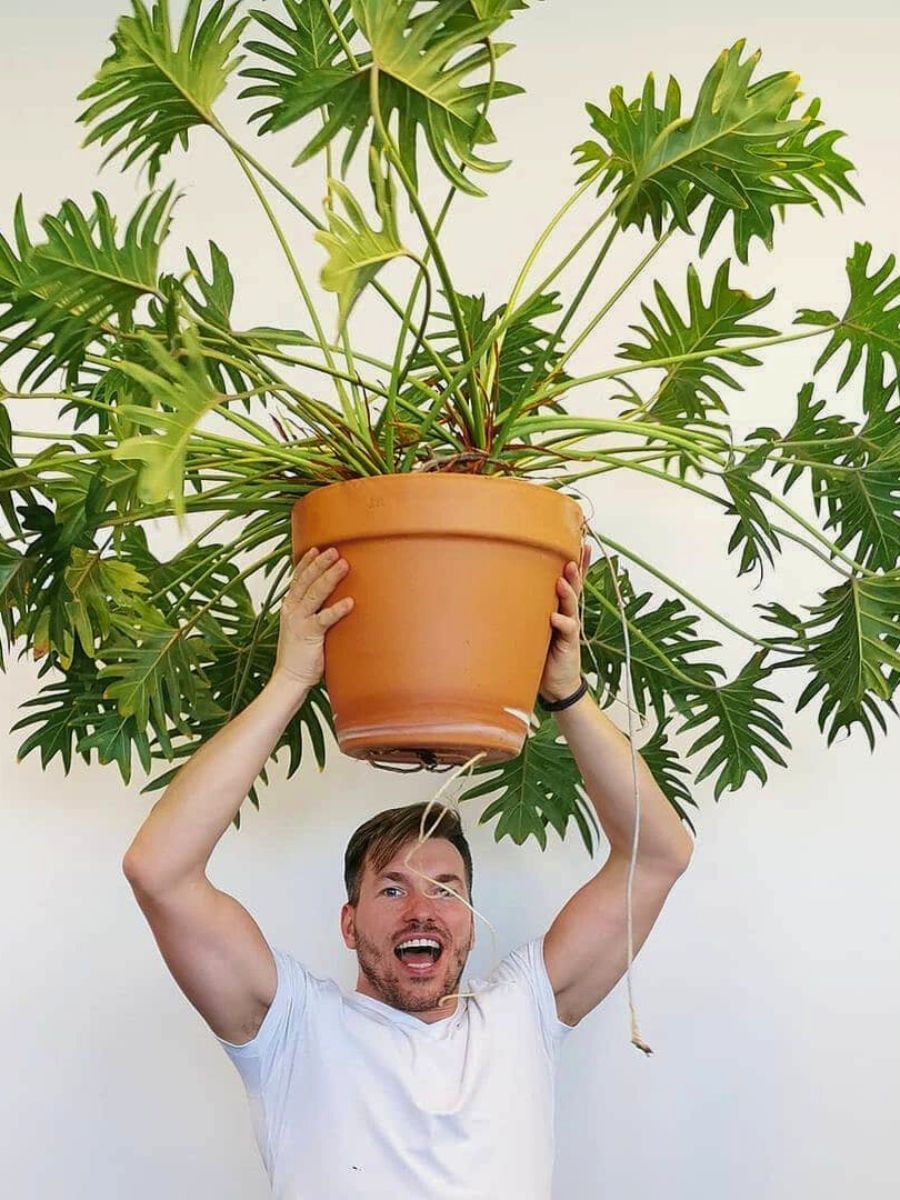
This gorgeous houseplant makes it into the list of big-leaf houseplants to have at home. The unique, bi-leathery, lobed leaves of the Philodendron Xanadu will make it a focal point in any room. As the plant matures, the leaves become more intricate with a greater number of lobes. Each leaf can grow up to 40cm long and 30cm wide and can have 10 to 15 lobes.
Keep the soil evenly moist, never soggy - test the top few inches before each watering. This plant thrives in medium light and tolerates brief spells of high humidity, but keep it away from drafty windows to avoid cold stress. Note that it is toxic to pets and people if ingested.
Alocasia Portodora
Alocasia portodora is one of the most wonderful big-leaf houseplants to have, being one of the upright selections of Elephant Ear. Alocasia portodora comes with glossy foliage and purple-toned leaf stalks.
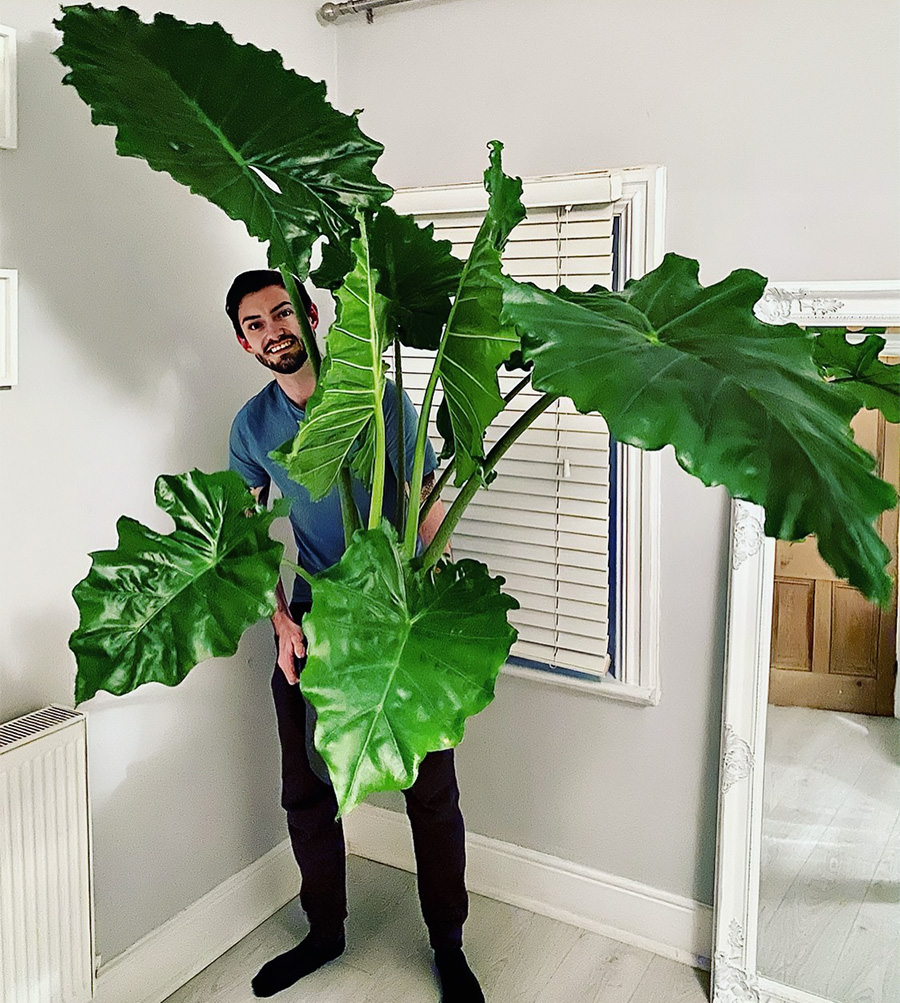
This tropical houseplant is one of the largest in the Alocasia species, known for its insanely large-shaped arrow ears (also known as elephant ears). One thing you should know about this plant, as it is part of the big leaf plants group, is that it thrives in bright light. So, keep near the window, with sufficient access to bright indirect sunlight. Avoid prolonged direct sun, which will char the leaves. Because its petioles are thick, this Alocasia can handle interior air movement better than most. This plant loves warmth and high humidity - common palm-house conditions.
(Worth mentioning is that there is even a variegated Alocasia with huge variegated leaves, the Alocasia macrorrhiza Variegata, but because this is not a commercially grown variety, more of a specialty product, it's not in this overview of the best 6 big leaf houseplants.)
Many people in the tropics grow them in their gardens as it's a hassle-free plant. One thing to note is that, after watering, the Alocasia leaks water from the edges of the leaves. Make sure not to place it close to wooden furniture or flooring, to avoid any unexpected damage to them.
Bird of Paradise (Strelitzia Reginae)
Strelitzia reginae, also known as 'Bird of Paradise', belongs to a lineage of palm-like relatives and is one of the most spectacular indoor trees with tropical flair.
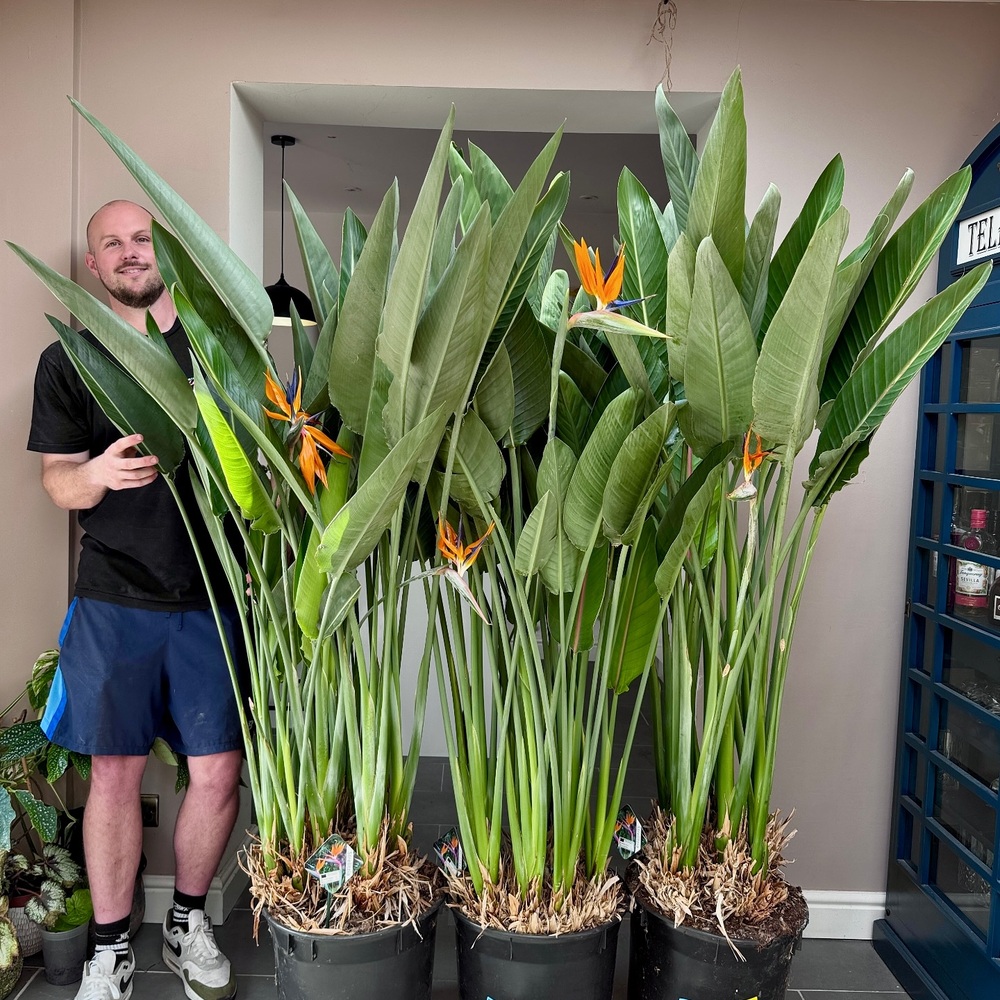
Though commonly grown outdoors in frost-free climates, Bird of Paradise adapts beautifully indoors, developing broad, paddle-shaped leaves that evoke a coastal paradise. Provide bright light and occasional early-morning full sun to encourage flowering. If you move it outdoors for summer, acclimate slowly to avoid leaf scorch. Maintain a rich, well-draining mix and feed monthly during the warmer season for best results.
The plant gets its name 'Bird of Paradise' because of its uncanny resemblance to the tropical bird of the same name. This plant is relatively easy to grow as it grows rapidly, and you don't have to be on your toes to maintain it.
Philodendron Gloriosum
Philodendron gloriosum is among the most coveted houseplants with big foliage to grace your home with a lush, graceful presence. Botanically aligned with Anthuriums and belonging to the Araceae family, some name it Anthurium gloriosum.
Although this plant is a part of the list of big-leaf indoor plants, it is a very rare kind, making it a true green gem to have in your space. This magnificent, large-leafed type of Philodendron, known as Philodendron gloriosum, has velvety, deep-green leaves with white veining.
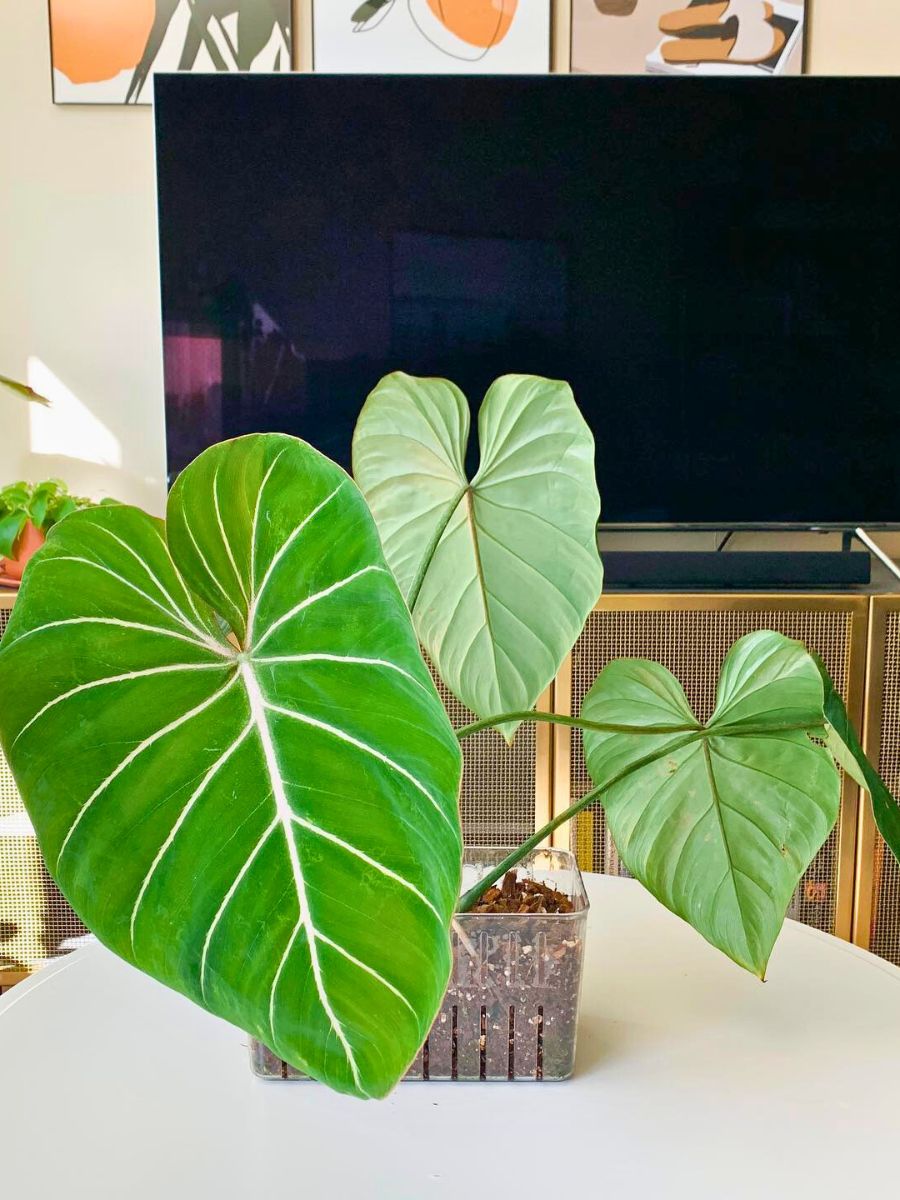
Being a rare gem, Anthurium gloriosum might be hard to find within your local gardening shop, but if you are lucky, you might find some suppliers online. The velvety Philodendron's large leaves sport white veins - true living art. Keep it in bright, indirect light, and water whenever the surface looks moist but not soggy. Balanced fertilizer during active growth will boost leaf size to its full maturity. Its crawling habit sets it apart from upright trees, yet still demands horizontal space for sprawling stems. It is toxic to humans and pets, so avoid any ingestion.
Zebra plant (Calathea Orbifolia)
The Zebra plant, referred to as the peacock plant, has a striking, exotic leaf pattern, making it an aesthetically appealing and highly sought-after big-leaf houseplant.
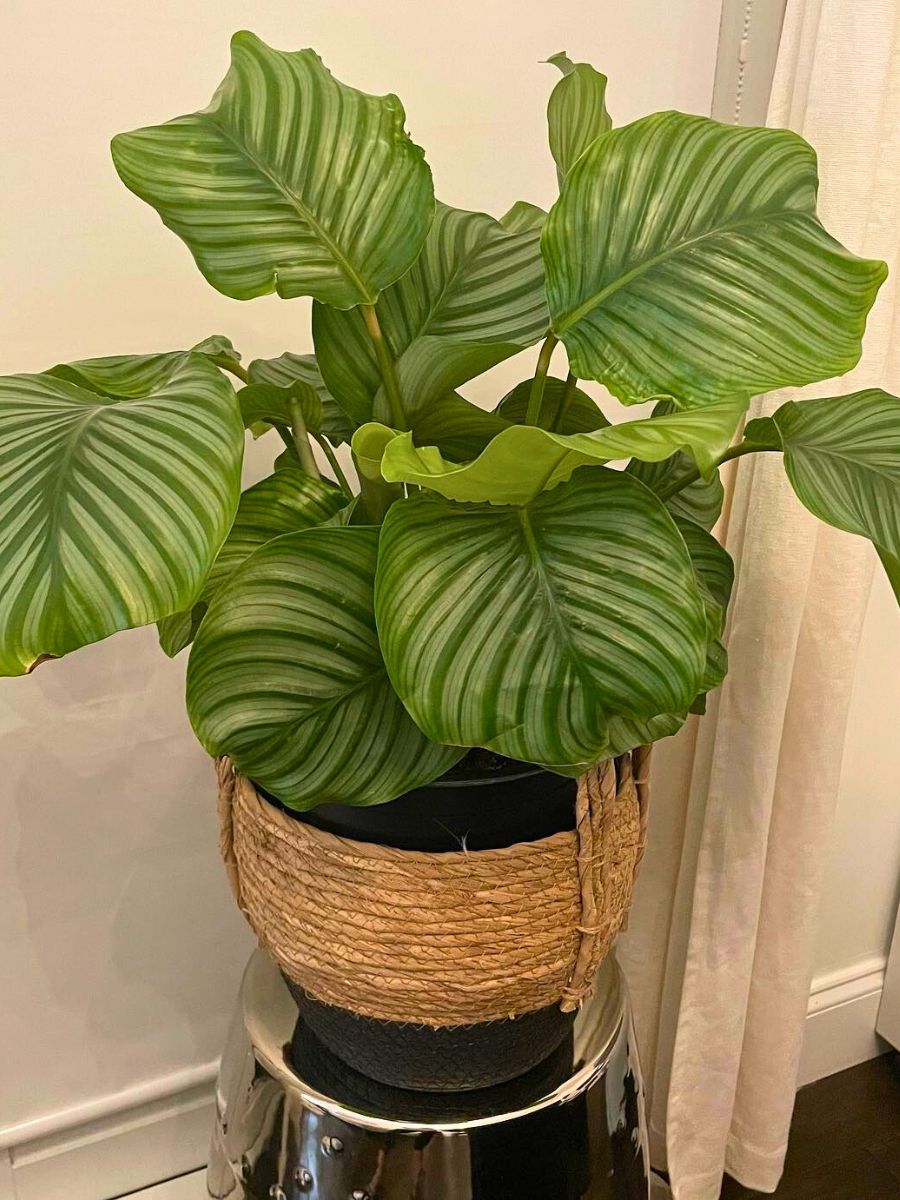
The Calathea orbifolia has enormous leaves with silver stripes, making them look super elegant and tasteful. Looking at this plant will automatically make you want to have it around, and you should, as it’ll make your home look very homey and graceful. Being a native of Bolivia, in the tropical forests, Calthea orbifolia loves humid conditions that mimic the rainforest conditions, so it might seem complicated to care for it. The Zebra plant earned its name 'diva' because it can be demanding if not provided with consistent care conditions.
The plant displays enormous leaves with silver stripes, best enjoyed under steady warmth and elevated humidity. The Zebra plant demands consistent conditions, and since it's a fussy house plant, anticipate occasional leaf-edge browning - a reminder to fine-tune ventilation and watering. Its sensitivity teaches patience and good maintenance habits.
Growing and Caring Tips for Big-Leaf Houseplants
Now that you have acquainted yourselves with the above greenery giants, here are the essential tips on growing and caring for big-leaf houseplants. Whether you're a green thumb or a beginner looking to embrace the green lifestyle, these guidelines will ensure your leafy friends survive and thrive indoors.
Light Matters
Big-leaf houseplants often hail from tropical regions, so they crave sufficient indirect sunlight. Find a well-lit spot in your home, but be cautious of exposing them to harsh, direct sunlight, since this might scorch their delicate foliage.
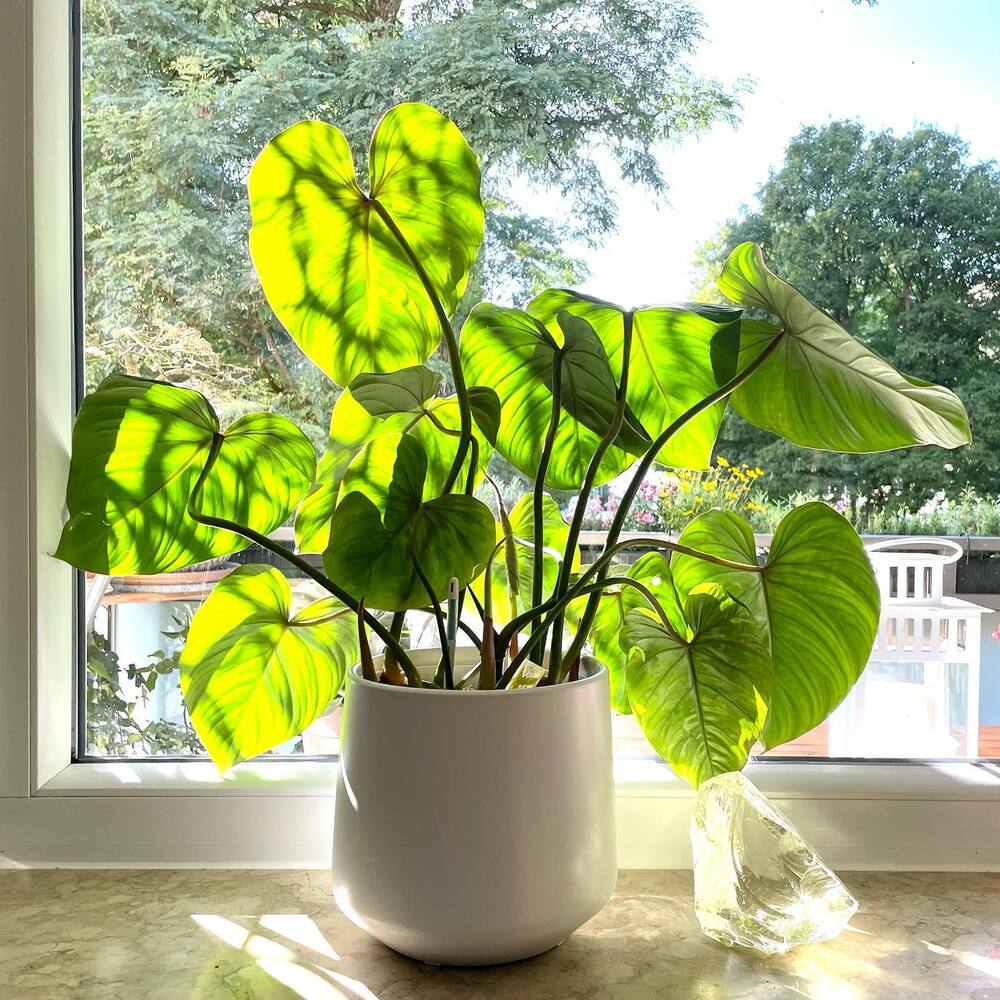
Grow in the Right Soil Mix
Provide a well-draining soil mix to prevent waterlogged roots. A blend of potting soil, perlite, and orchid bark is ideal for most big-leaf houseplants. Growing in the right soil mix enhances root formation and supports plants' optimal growth. A cast iron plant, snake plant, or Licuala grandis palm can serve as a biological barometer - if they wilt, the spot may be unsuitable for fussier friends.
Water Consistently
Strike a balance in your watering routine. These plants prefer slightly moist soil, so let the top inch of soil feel dry before watering again. Overwatering can lead to root rot and pest infestation, so it's crucial to monitor your plant's water needs, rather than watering blindly.
Fertilizer Application
During the growing season, give your big leaf companions a boost with a balanced liquid fertilizer. However, moderation is key to avoiding nutrient buildup, which can inhibit its growth.
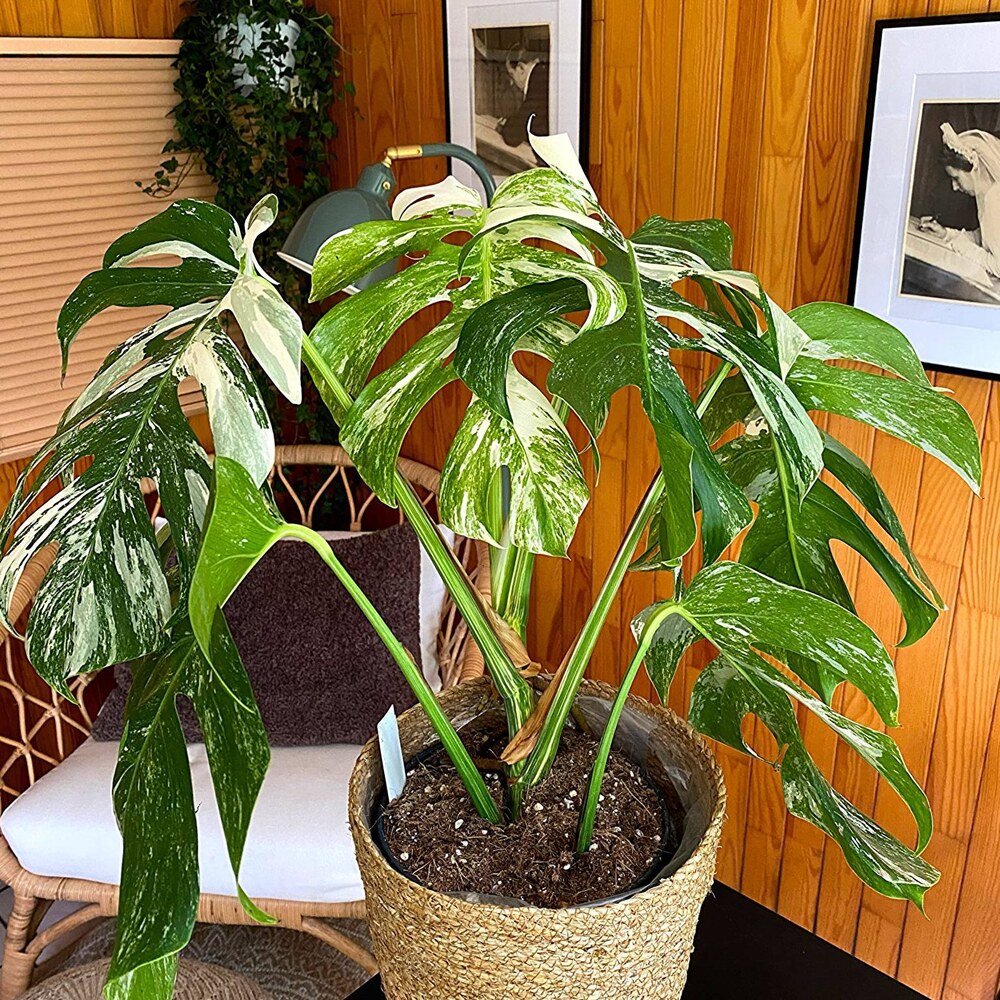
Pruning and Maintenance
Keep an eye on the size of your big-leaf houseplants, especially if space is a consideration. Prune away any yellowing or damaged leaves to encourage new growth. Prune any undesirable leaf stalks to maintain the aesthetic appeal of your green giants. Support vigorous growers like Monsteras with moss poles to encourage vertical trees rather than sprawling vines.
Humidity
Replicate the humidity of their native habitats by misting the leaves or placing a tray of water near the plants. This is particularly important during the dry winter months.
Each Species Has Its Unique Care Requirements
As you embark on your journey with big-leaf houseplants, remember that each species has its unique care requirements. Pay attention to the individual needs of your green companions, and you'll be rewarded with a flourishing indoor jungle.
Header image by @casagaia_arq, feature image by @mamabotanica.amsterdam.

